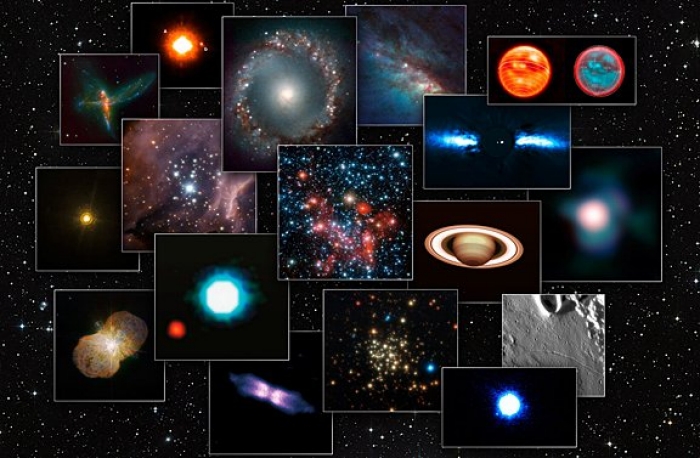Fellows' Research

The ESO Fellows carry out independent astronomical research with the ultimate goal to understand how planets, stars and galaxies in the Universe form and evolve.
Below are examples of some of the research carried out by former ESO Fellows divided according to main scientific areas at ESO.
For more information about ESO's astronomical research activities please consult our Science Activities web pages. Useful links related to the current ESO staff, fellows and students and the science projects done at ESO (both in Garching and Santiago) can be found here.
Solar System
Topics covered in this research area
- Planets
- Comets
- Dwarf Planets and asteroids
Planets and Star Formation
Topics covered in this research area
- Detection and characterisation of extrasolar planets
- Observational methods to study the earliest stages of star formation
- The circumstellar environment of high and low mass stars
- Star formation at the Galactic Centre
Stellar Structure and Evolution
Topics covered in this research area
- Stellar evolution, especially the late stages, for example:
- Mass loss
- Planetary nebulae
- Supernovae
- Stellar abundance studies
- Stellar surface structures
- Stellar pulsations
- Stellar magnetic fields and magnetic activity
- Low mass stars
- Compact Binary stars
- Black holes and neutron stars
These research topics are covered using observations from X-rays to Infrared, and with many different techniques, e.g., high resolution optical/IR spectroscopy, optical interferometry and polarimetry.
Stellar Populations
Topics covered in this research area
Subject in this research area aim at understanding the stellar content of nearby star clusters and galaxies with the goal of understanding their formation and evolution history.
- Resolved and unresolved star cluster (formation, stellar content, destruction)
- Resolved stellar populations in the Local Group and nearby galaxies
- Dwarf galaxies (stellar content and dynamics)
- Nearby galaxies (integrated light, dynamics, central objects)
Evolution of Galaxies and the ISM
Topics covered in this research area
Subject in this research area aim at understanding the formation and evolution of galaxies from low to high redshift, their mass assembly and enrichment histories, as well as the connection to active galactic nuclei.
- Evolution of the interstellar medium in galaxies
- Evolution of galaxy structure and dynamics
- High-redshift galaxies and galaxy clusters
- Co-evolution of black holes and galaxies
Cosmology and the Early Universe
Topics covered in this research area
Subjects in this research area aim at understanding the dark contents of the Universe (Dark Matter and Dark Energy) with the goal of understanding its expansion history since the Big Bang.
- Type Ia supernovae as probes of Dark Energy
- Type II supernovae as extragalactic distance indicators (Hubble constant)
- X-ray clusters and the Sunyaev-Zel'dovich effect
- Weak lensing and the large-scale distribution of Dark Matter
- Cosmology with the European Extremeley Large Telescope (ELT)
